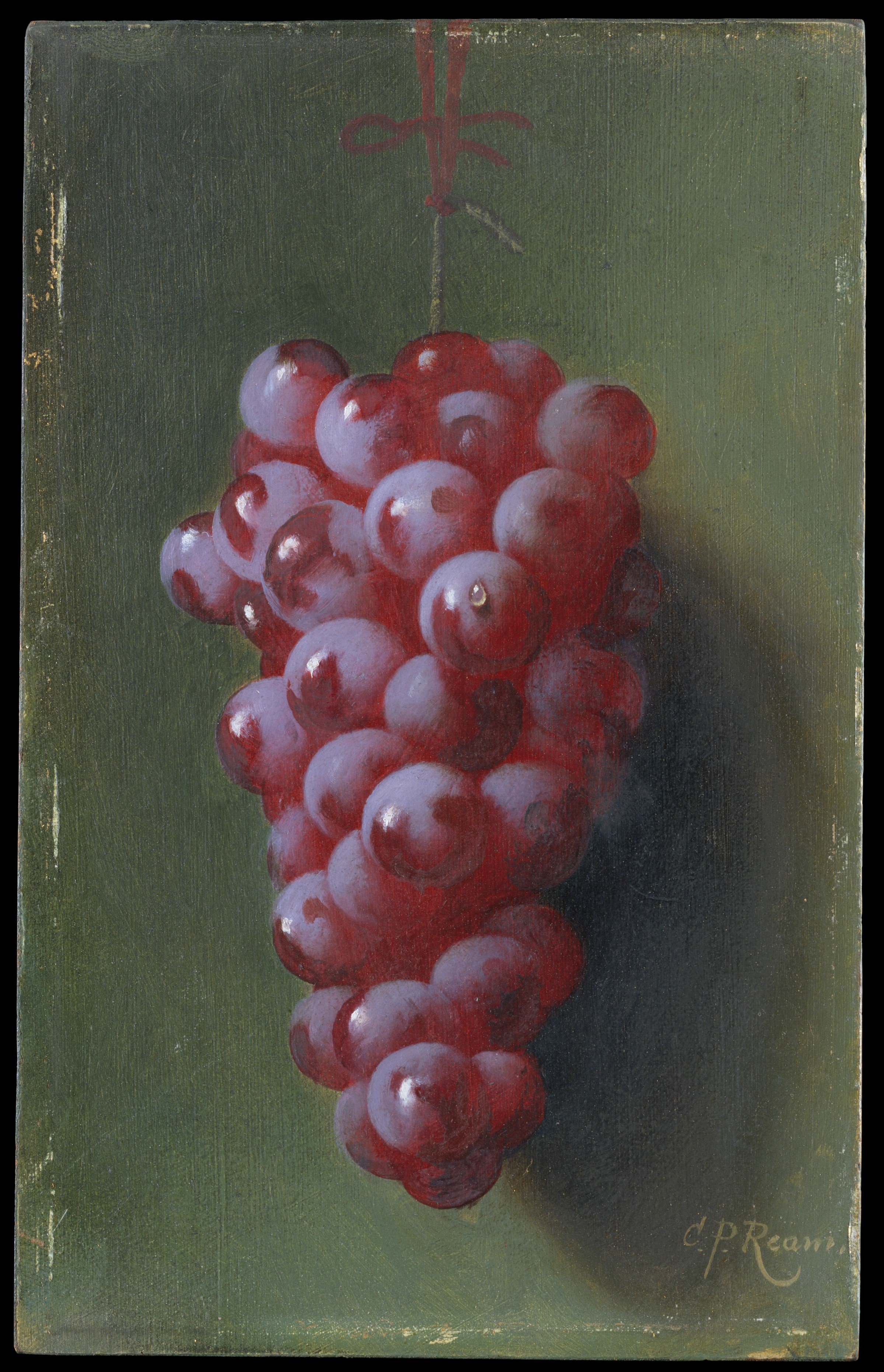Produced for K-12 educators, Teach This Poem features one poem a week from our online poetry collection, accompanied by interdisciplinary resources and activities designed to help teachers quickly and easily bring poetry into the classroom. The series is written by our Educator in Residence, Dr. Madeleine Fuchs Holzer, and is available for free via email.
Featured Poem
Still Life with Grapes

Still Life with Grapes by Carducius Plantagenet Ream (1838–1917). Medium: Oil on canvas. Dimensions: 14 x 10 inches. Credit Line: Gift of Peck Stacpoole Foundation, 1999. www.metmuseum.org.
Classroom Activities
- Warm up: Quickly go around the room asking your students for one or two words they associate with autumn. If a student cannot think of something, they can pass, and you can return to them when everyone else if finished.
- Project Still Life with Grapes so everyone can see it. Ask your students to look at it carefully and silently write down the details they notice in the image. Saying “a bunch of grapes” is not enough. What are the colors? The brushstrokes? The structure? When they have finished writing, ask them to turn and talk with a partner about what they noticed and how it made them feel about the grapes.
- Project the poem “October” by Robert Frost so all your students can see it. Again, ask them to silently write down what they notice in the poem. What jumps out at them? Then, ask one of your students to read the poem aloud to the class while the listening students jot down what details they hear that they did not notice before. Repeat this process with another student reading aloud.
- Ask your students to gather in small groups and share what jumped out at them in the poem, including the words, phrases, and structure. How does Frost describe October? What words and phrases can they cite, drawing on what they noticed, as evidence for their interpretation?
- Whole-class discussion: What role do your students think the grapes play in the poem? Ask them to think back to the image of grapes that they looked at earlier. How does what they noticed about these grapes make them feel about the grapes at the end of the poem? What would they want to say to the month of October after reading this poem?
